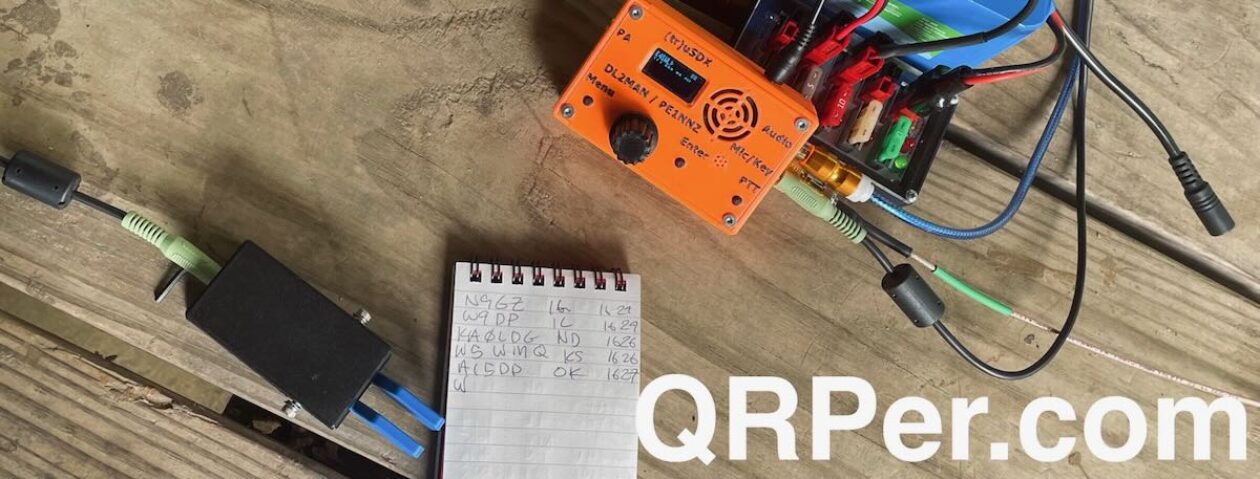by Micah (N4MJL)
It’s not every day that I get the chance to do a POTA activation from the radio room of a battleship. But thanks to the Azalea Coast Amateur Radio Club, I was able to do a POTA activation of US-6831 from the radio room of (BB-55) USS North Carolina in Wilmington, NC.
 If you would like the chance to be a guest radio operator for the BB-55, check out http://ac4rc.org to set up your activation.
If you would like the chance to be a guest radio operator for the BB-55, check out http://ac4rc.org to set up your activation.
 The below-deck self-guided tour takes you through Radio Central. The radio room that the radio club utilizes can be seen from Radio Central; however, it is separated from public access by a clear plexiglass bulkhead door. Because the public can watch from the other side of the glass, be aware that it can be very noisy.
The below-deck self-guided tour takes you through Radio Central. The radio room that the radio club utilizes can be seen from Radio Central; however, it is separated from public access by a clear plexiglass bulkhead door. Because the public can watch from the other side of the glass, be aware that it can be very noisy.
To make things more distracting, there is a loudspeaker in the radio room central playing pre-recorded Morse code for ambiance.
 Radio Central is located a couple of floors down in the belly of the iron-armored beast, so be sure to schedule your activation on the POTA page. There is no cell phone reception below decks.
Radio Central is located a couple of floors down in the belly of the iron-armored beast, so be sure to schedule your activation on the POTA page. There is no cell phone reception below decks.
The radio club has an IC-756 Pro III available for use. I am not sure about the status of the other WWII vintage radios. I definitely recommend you bring your own key! They had a Bencher paddle thrown in the filing cabinet; it was not usable due to the contacts being bent way out of position. Fortunately, I brought my BaMakey TP-III key with me. If you are using a 3.5mm stereo plug, make sure to bring a 1/4” plug adapter for use with the IC-756 key/headset jacks.
 The radio club has the IC-756 and external tuner hooked up to one of the battleship’s original long wire antennas. During the activation, I only operated on 20M. I did attempt to tune 17m and 15m, but I was unsuccessful in getting a match. However, that may have been operator error on my end since I was unfamiliar with the radio and that particular external tuner.
The radio club has the IC-756 and external tuner hooked up to one of the battleship’s original long wire antennas. During the activation, I only operated on 20M. I did attempt to tune 17m and 15m, but I was unsuccessful in getting a match. However, that may have been operator error on my end since I was unfamiliar with the radio and that particular external tuner.
After a minute or so of calling CQ, the Reverse Beacon Network did its magic, and I was blown away by an insane pileup. I realized that I am used to operating QRP with somewhat compromised antennas. In sheer panic, I started looking to see how to turn the power down from 100 watts to, say, 2 watts!!!!
In that moment, I saw a vision of a seasoned Navy Radio OP sitting beside me. He reached over and smacked me on the back of my head and said, “Listen, kid, you’re not some hippie tree hugger operating QRP on some windswept mountaintop. You are operating from the battleship USS North Carolina. She has participated in every major naval offensive in the Pacific area of operation during WWII. Now stand tall, run full power, and work ’em all!”
With that old-school counseling session complete, I began to work the pileup. After being on the air for one hour and fifty-three minutes, I worked 67 stations, with two duplicates and one busted call sign (that I know about). Eventually, no one responded back to my CQ, and I sent “Last call fer POTA de N4MJL” twice. After no one responded to my second message, I quickly sent QRT and started breathing again!!!!!!
 In addition to working SA4BLM from Sweden, one of the coolest contacts I got that day was from my dad, AC0UT, located in Missouri.
In addition to working SA4BLM from Sweden, one of the coolest contacts I got that day was from my dad, AC0UT, located in Missouri.
It’s not every ham that can say that their dad called them using CW while on a battleship.
CW actually runs in my family. I am a third-generation CW op. Continue reading Three Generations of CW Ops: Battleship North Carolina Activation and a Family Legacy















































































 This will be corrected tomorrow.
This will be corrected tomorrow.